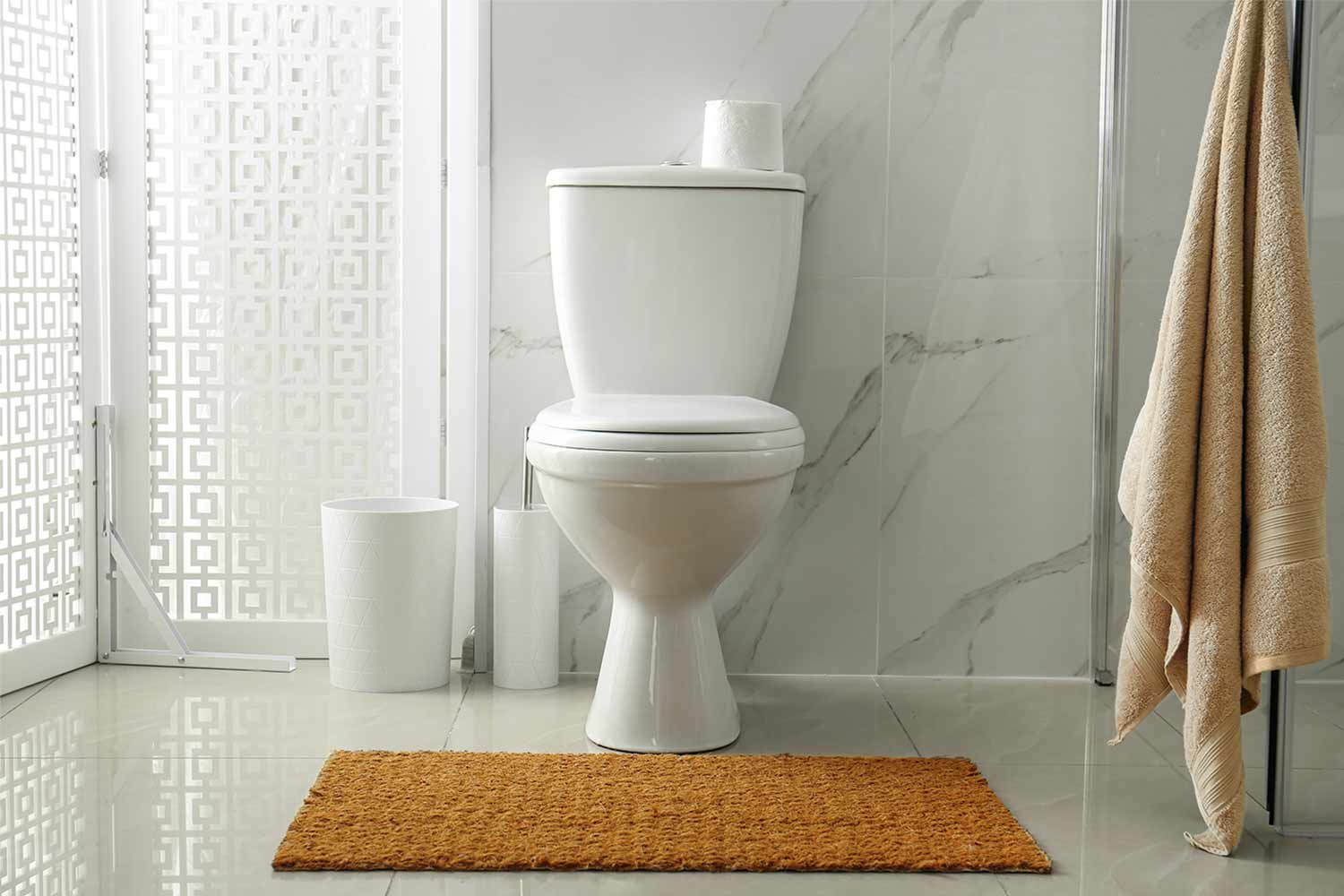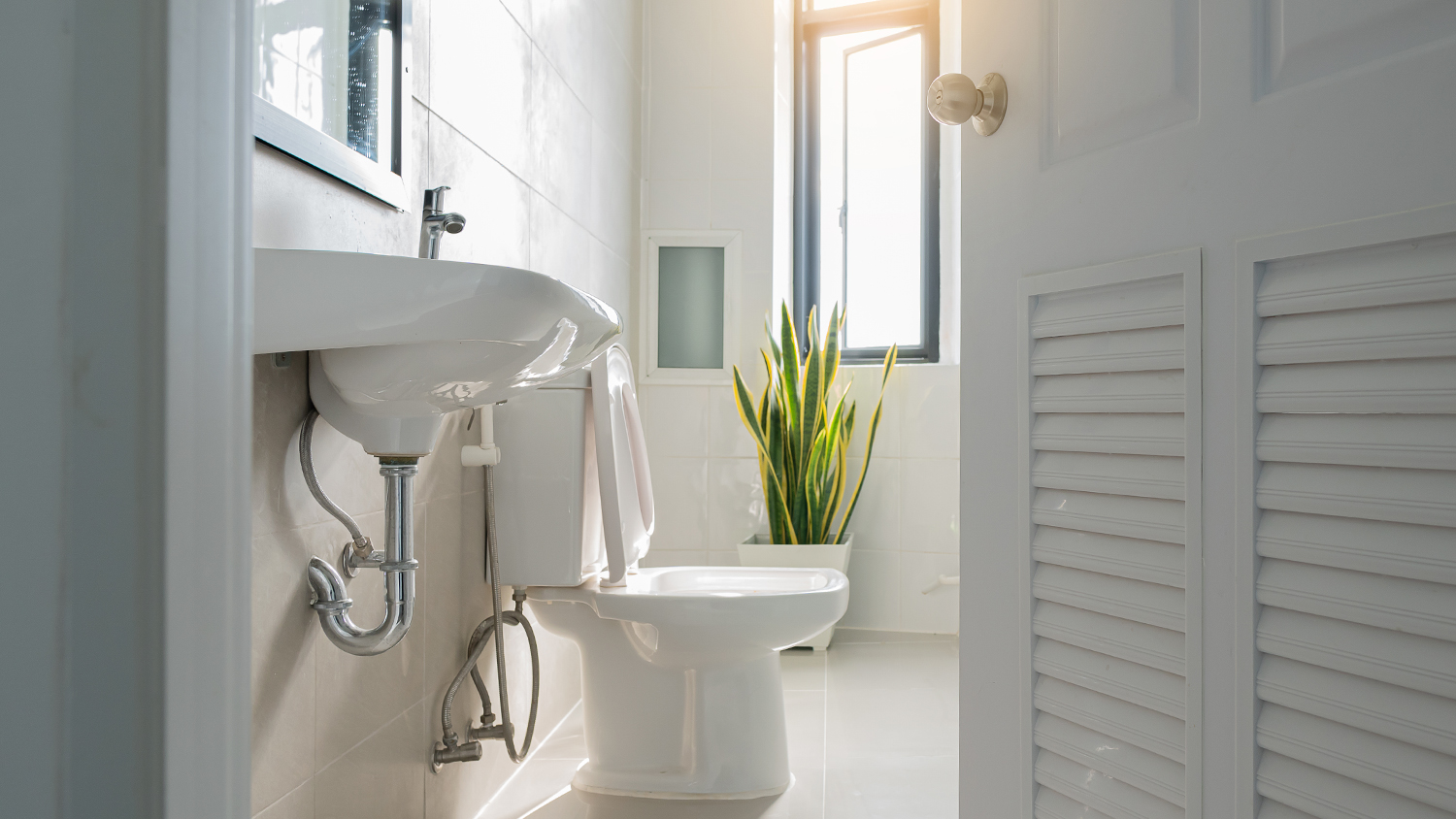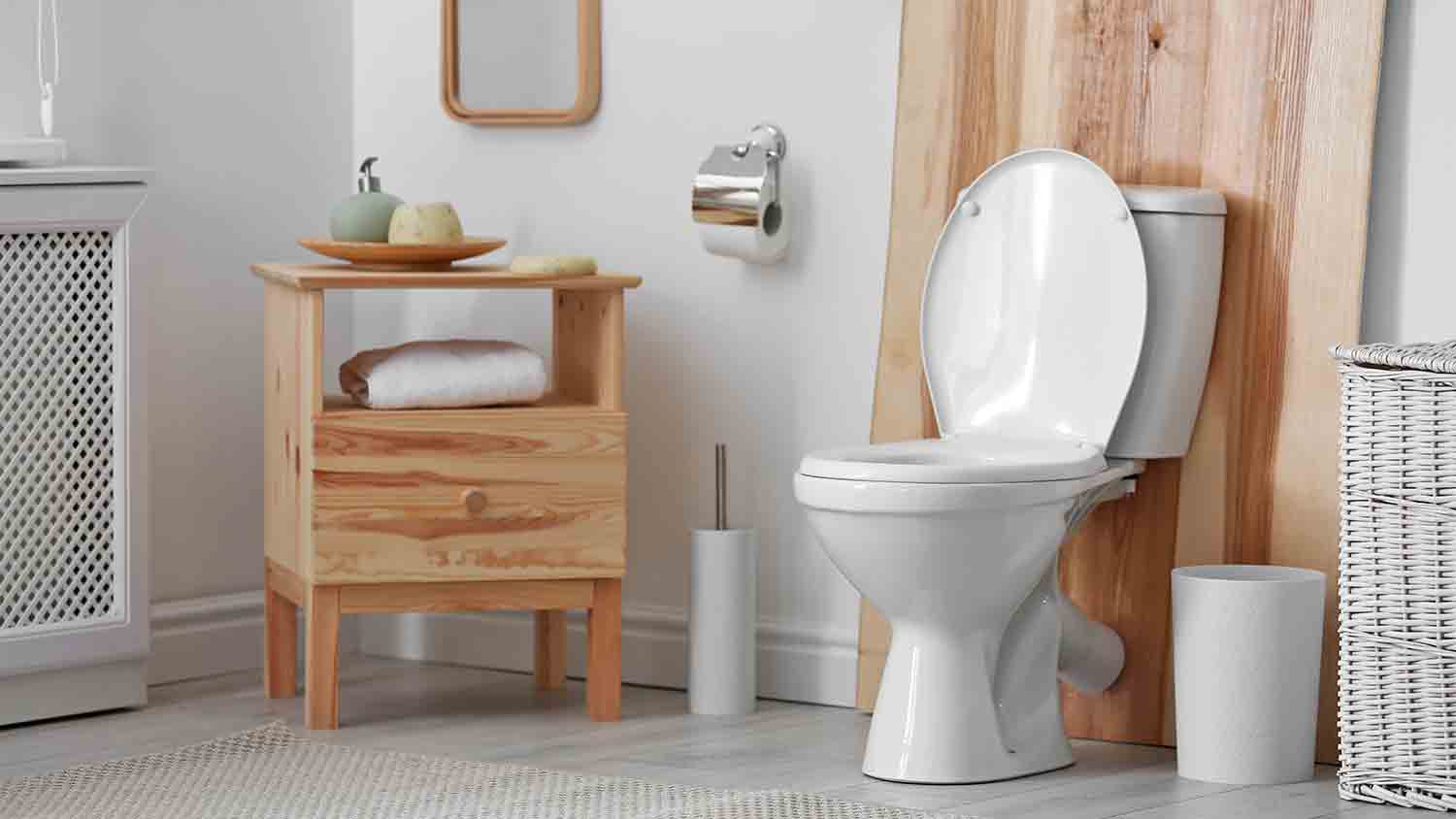
Need to know what sewer line replacement costs in Columbus, OH? This guide will help you prepare to budget for sewer line replacement done by local contractors.
Don’t waste time over the waste in your septic tank


Concrete, polyethylene, and fiberglass are common septic tank materials.
Some locations require septic tanks to be at least 1,000 gallons.
Check local laws for building permits and percolation test requirements.
Small septic tanks cost between $2,900 and $18,600 on average.
Installing a septic tank is a job that’s best left to the pros.
That new guest room add-on might not be so sweet if your guest has to trek to the outhouse. You might wonder if you can install a small septic tank system for one toilet—especially in remote spaces like a cabin or in tight ones like a camper—but this project isn’t a small undertaking. Here’s everything you need to know about choosing a septic system for a single bathroom.
A septic system for one toilet is ideal for secluded or sectioned-off homes with just one bathroom or one to two occupants. This includes cabins, recreational vehicles, or an add-on to your original home.
Most homes in rural areas require a septic system because they cannot connect to the public sewer system. One-toilet septic systems generally aren’t large enough to accommodate homes with two or more bathrooms, so a larger septic system is a must-have in those cases.

While most people prefer to flush and forget, knowing the mechanisms of your one-toilet septic system can help you make the best decisions for your home. Here’s a quick look at how they work:
After you flush your toilet, take a shower, use the sink, or run your dishwasher or washing machine, the waste travels down a pipe to the septic tank, which is self-contained belowground.
From there, the liquids and solids in the tank separate into three distinct layers: scum, partially clear water, and sludge. The scum contains less dense solids than water (such as oils and grease), the water in the center is partially clear because the scum floats at the top, and the denser sludge contains heavier waste particles that naturally sink to the bottom.
The bacteria must break down the solid waste in the tank before it can travel out of the tank. It can take a few hours for the bacteria to multiply and break down the waste over the next few days. This microbial process partially liquefies the waste so it can flow through underground pipes to get further treated.
Eventually, the liquified waste filters out through underground pipes. But don’t worry—this process won’t take place in your garden beds. The waste flows to a septic tank drainage field, also called a leach field, where the waste slowly comes out through perforations in the pipes and drains and enters trenches.
These trenches contain gravel and dirt and serve as the final filter for breaking down waste.
A small septic tank installation costs anywhere from $2,900 and $18,600, depending on the septic tank size and the extent of work to install the septic system.
The smallest septic tank size available on the market is a 750-gallon tank. This tank size is large enough to hold and separate waste from up to two rooms in a home, but keep in mind that not all municipalities permit tanks of this size—some areas require septic systems to be at least 1,000 gallons in size. To be on the safe side, check your local laws to ensure that you can install a 750-gallon septic tank before you make a purchase.
Here’s a septic tank capacity chart for small spaces to help put the size of your septic tank into perspective:
| Septic Tank Size in Gallons | Home Size in Sq. Ft. | Number of Rooms |
|---|---|---|
| 750–900 | Under 750 | 1 |
| 1,000–1,200 | 750–1,200 | 2 |
| 1,050–2,250 | 1,200–2,250 | 3 |
There are three main materials for small septic tanks: precast concrete, polyethylene, and fiberglass. However, some consist of steel.
| Material | Lifespan (Years) |
|---|---|
| Precast concrete | 40 |
| Polyethylene | 30 |
| Fiberglass | 30 |
| Steel | 20–25 |
As the most traditional septic tank material, precast concrete septic tanks are durable, dense, customizable, and resistant to environmental changes. These tanks can last up to 40 years if you routinely maintain, pump, and inspect your septic tank. Concrete tanks are more costly than polyethylene, but you’ll pay less for one than a fiberglass tank. The main downsides are that concrete is heavy, requires more installation equipment (like a crane), and is more prone to cracking over time.
Polyethylene is a type of plastic septic tank and is the most budget-friendly option for homeowners looking to save on the cost of their septic tanks. These tanks can last up to 30 years with proper septic tank maintenance and pumping of the septic system. They’re also corrosion-resistant, lightweight, and easy to transport to the project site. However, plastic tanks are more prone to environmental damage from heavy vehicles, buoyancy issues, changes in the soil’s condition, and temperature changes.
While fiberglass tanks use fiber-reinforced plastics (FRPs) and are technically a plastic material, these tanks have an edge over polyethylene septic tanks thanks to the reinforcement of glass fibers. You could say fiberglass tanks have the best of both worlds because they’re lightweight yet stronger than traditional plastic septic tanks. They have a similar lifespan to polyethylene septic tanks—around 30 years.
The main downside with fiberglass septic tanks is that, like with plastic tanks, fiberglass tanks are so lightweight that they could float or move in installation sites where the water table is too close to the tank. For this reason, you might want to avoid plastic and fiberglass tanks altogether if you live in a climate with a high water table.
You might find steel septic tanks on the market, but metal tanks aren’t a good option for homes. For one, they’re more costly. They’re also prone to rust—which, over the next 20 to 25 years after the installation, causes the system to collapse. And there’s not much that’s more shocking (and gross) than walking across your yard only for your steel septic system to collapse on impact!
According to data from Angi customers, most homeowners (32.9%) have a pro clean their septic tank every one to four years. However, 24.5% of homeowners don’t know how often they get their septic tank cleaned. If you don’t know the last time you got your system cleaned, reach out to a septic company ASAP.
Before you start excavating, you may want to make a phone call to your local health department! Your local municipality might have regulations on how far away you can install a septic system from your home's foundation. Generally speaking, the septic tank should be on level ground to encourage solid waste to settle toward the bottom of the tank.
Refer to the plumbing outlet to help determine where you will put your septic tank, as you’ll want it to be accessible. Also, avoid installing the tank in a flood zone, near steep slopes, and in locations where it’s hard to excavate, such as rocky terrain.
If you only need a septic system for one single toilet, you can choose between a few alternatives to a traditional septic tank. These include:
Aerobic treatment units (ATUs) which use oxygen to treat wastewater.
Recirculating sand filter systems, which use sand layers for filtration.
Composting toilets, which don’t require much water and convert waste into compost for your home.
Drip irrigation systems that use a combination of wastewater treatment and irrigation.
Constructed wetlands, which mimic the natural filtration process of wetlands.
From average costs to expert advice, get all the answers you need to get your job done.

Need to know what sewer line replacement costs in Columbus, OH? This guide will help you prepare to budget for sewer line replacement done by local contractors.

Need to know what sewer line replacement costs in San Francisco, CA? This guide will help you prepare to budget for sewer line replacement done by local contractors.

Need to know what sewer line replacement costs in Baltimore, MD? This guide will help you prepare to budget for sewer line replacement done by local contractors.

A clogged main sewer line can lead to sewage leaks in your yard or home. Look for these eight signs of a clogged septic line to fix this problem ASAP.

A sewage smell outdoors is not only gross, but it indicates a possible health hazard. Learn how to get rid of the septic smell outside and when to call a pro.

In order to function properly, your septic tank needs to be regularly inspected and emptied. How often you should get your septic tank inspected depends on a few factors.